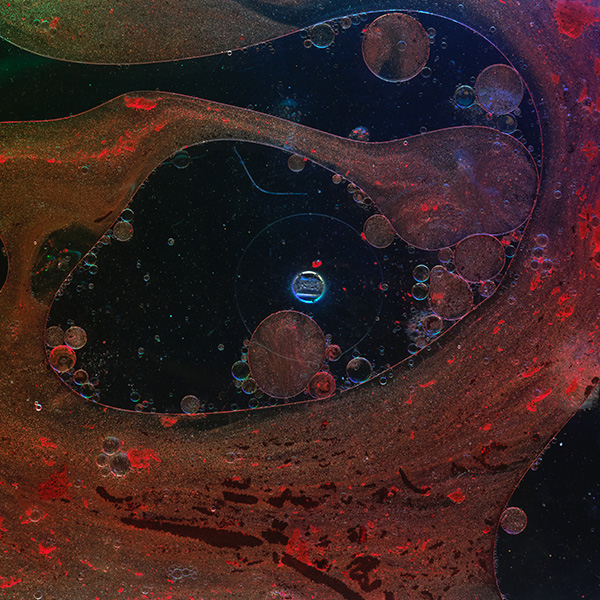Key Benefits
- Check for thyroid overactivity and autoimmunity suggestive of Graves’ disease.
- Spot hyperthyroid imbalance early with low TSH and high Free T4.
- Clarify causes of palpitations, heat intolerance, tremor, anxiety, and weight loss.
- Guide therapy decisions and dose changes by trending Free T4 with TSH.
- Protect heart rhythm and bones by flagging ongoing under- or over-treatment effects.
- Flag autoimmune thyroid involvement using TPO and Tg antibodies; not specific for Graves.
- Protect fertility and pregnancy with early detection of hyperthyroidism or positive antibodies.
- Ensure accurate interpretation with TSH receptor antibodies or uptake scan if uncertain.
What are Graves’ Disease
Graves’ Disease biomarkers are the body’s signposts that show both thyroid drive and its autoimmune trigger. They fall into two connected groups. Hormone markers reflect thyroid output and metabolic pace: free thyroxine and free triiodothyronine (free T4, free T3) alongside the pituitary’s control signal (TSH, thyroid‑stimulating hormone). Immune markers reveal the cause: antibodies that bind and activate the thyroid’s TSH receptor (TSH receptor antibodies, TRAb; thyroid‑stimulating immunoglobulins, TSI). Together, these tests link symptoms to mechanism—confirming that the thyroid is being overstimulated and that an autoimmune signal is pushing it.
This matters because Graves’ is dynamic. Biomarkers help make the diagnosis, distinguish it from other causes of an overactive thyroid, and show how strongly the immune system is driving the gland. They guide treatment choices and dosing by showing whether thyroid hormone levels are settling and whether the antibody “push” is fading. Over time, trends in these markers help anticipate relapse or remission and give clues about risks beyond the thyroid, such as eye involvement (thyroid eye disease). In short, they translate a complex autoimmune process into actionable, trackable biology.
Why are Graves’ Disease biomarkers important?
Graves’ Disease biomarkers map the crosstalk between the immune system, thyroid gland, and pituitary, showing how an autoimmune signal can rev the body’s metabolism and ripple through the heart, brain, bones, muscles, mood, fertility, and pregnancy. They help distinguish true overactive thyroid hormone effects from look‑alikes and gauge disease activity over time.
In routine reference intervals, TSH sits around 0.4–4.5 and Free T4 around 0.8–1.8, with “feels best” values often near the middle. Thyroid peroxidase (TPO) and thyroglobulin (Tg) antibodies are normally negative or very low; higher titers indicate autoimmune thyroid activity. In Graves, the classic pattern is a very low TSH with a high Free T4, plus positive thyroid‑stimulating antibodies (TSH receptor antibodies/TSI), and TPO/Tg antibodies may also be present. Markedly high Free T4 drives palpitations, heat intolerance, tremor, anxiety, weight loss, menstrual irregularity, decreased libido, and can precipitate atrial fibrillation and bone loss; in teens it can cause hyperactivity and rapid growth; in pregnancy it increases risks like miscarriage and preterm birth.
When values fall below range, physiology shifts. A suppressed TSH with high‑normal hormones still reflects pituitary “braking” from excess hormone. A low Free T4 with a rising TSH points toward hypothyroid physiology (after treatment or fluctuation), bringing fatigue, cold intolerance, constipation, slowed thinking, and in children slowed growth; in pregnancy, low maternal Free T4 can affect fetal neurodevelopment. Falling antibody titers generally track quieter autoimmunity.
Big picture, these biomarkers integrate endocrine control with immune activity and cardiovascular, skeletal, and neurocognitive health. Tracking them clarifies current risk, anticipates complications, and links day‑to‑day symptoms with long‑term outcomes like arrhythmia, osteoporosis, and reproductive health.
What Insights Will I Get?
Thyroid status drives how your body produces energy, regulates temperature, sets heart rhythm, shapes mood and cognition, and supports reproduction and immunity. Graves’ Disease over-activates this system. At Superpower, we test these specific biomarkers: TSH, Free T4, TPO Ab, Tg Ab.
TSH is the pituitary’s signal that tells the thyroid how hard to work. In Graves’ Disease, antibodies stimulate the TSH receptor, so TSH is typically suppressed. Free T4 is the circulating active hormone; it often rises in Graves’ hyperthyroidism. TPO Ab (thyroid peroxidase antibodies) and Tg Ab (thyroglobulin antibodies) indicate thyroid autoimmunity; they are common in Graves’ but not specific. The hallmark Graves’ antibody targets the TSH receptor; TPO Ab and Tg Ab support an autoimmune cause but cannot by themselves confirm Graves’ Disease.
For physiologic stability, a normal TSH with a normal Free T4 reflects a balanced metabolic drive and more predictable system function. A low TSH with a high Free T4 signals hypermetabolic strain, increasing demands on the heart, bones, brain, and thermoregulation. Trends matter: movement of TSH and Free T4 back toward the reference range suggests improving stability, while widening suppression/elevation suggests escalating dysregulation. Persistently elevated TPO Ab or Tg Ab indicate ongoing autoimmune activity and greater likelihood of fluctuation; lower or stable antibody levels suggest quieter immune pressure.
Notes: Pregnancy (especially first trimester hCG), postpartum shifts, age, acute illness, and major stress can alter TSH and Free T4 set-points. Biotin can artifactually lower TSH and raise Free T4 in some assays. Iodine load, amiodarone, glucocorticoids, and assay variability affect results. TSH adjusts more slowly than Free T4, so timing and trend are critical.







.avif)



.svg)





.svg)


.svg)


.svg)

.avif)
.svg)










.avif)
.avif)
.avif)


.avif)
.png)


